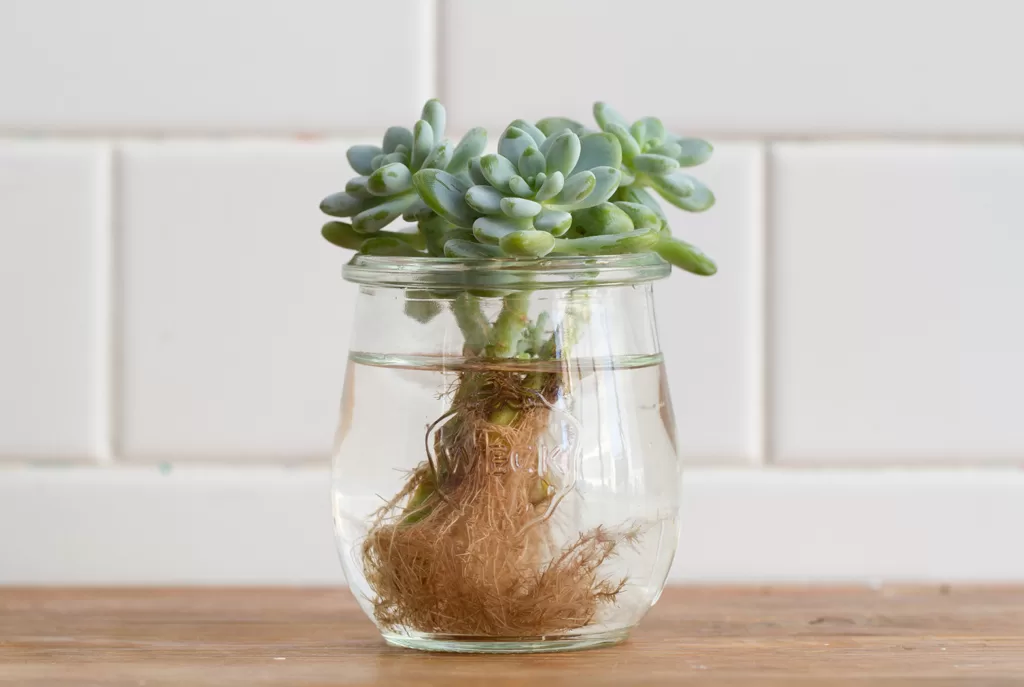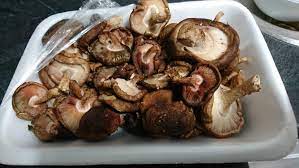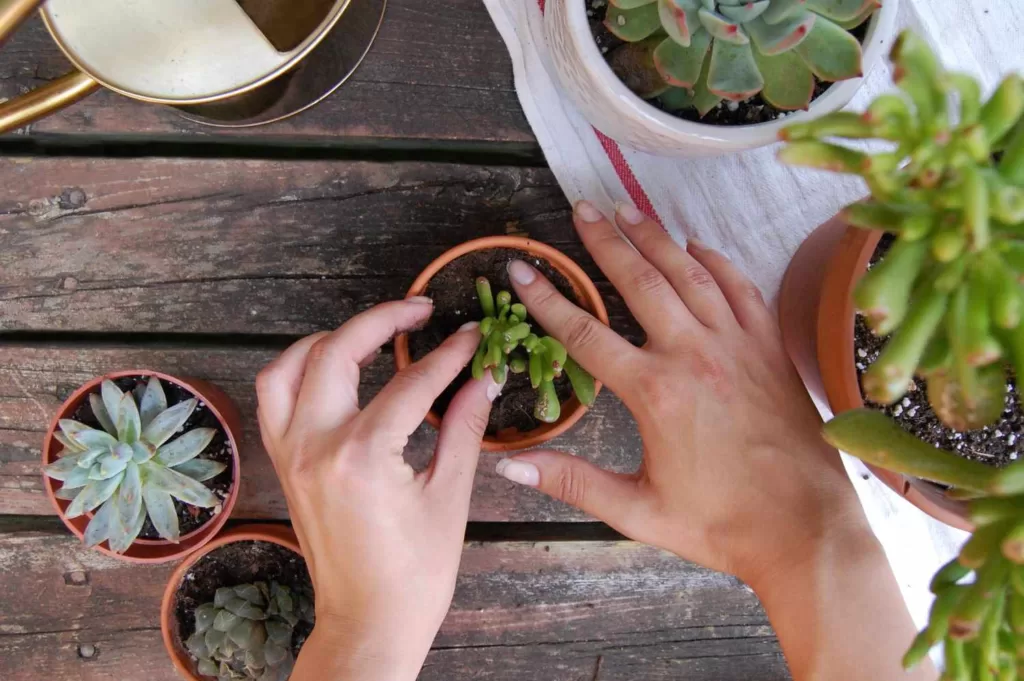To make a jade plant into a tree, you can follow these steps:
- Choose a healthy, mature jade plant with a thick stem.
- Cut off any lower leaves or branches to reveal the stem.
- Allow the stem to heal and callus over for several days before planting.
- Plant the jade plant in a well-draining potting mix, leaving the top of the stem above the soil.
- Place the jade plant in a sunny location and water it regularly to keep the soil moist but not waterlogged.
- As the jade plant grows, pinch back the tips of the branches to encourage bushier growth.
- When the jade plant reaches the desired height, you can stop pinching back the branches and allow it to develop a tree-like canopy.
- you can also use a stake or a small wooden stick to support the stem if it is getting too heavy.
It will take time, but with patience and proper care, your jade plant will eventually grow into a tree-like shape.
Table of Contents
How to start a jade bonsai
Starting a jade bonsai involves several steps:
- Choose a healthy, mature jade plant with thick stem.
- Prune the jade plant to shape it into a bonsai form, removing any leaves or branches that don’t fit the desired shape.
- Choose a shallow bonsai pot with good drainage holes, and fill it with a well-draining bonsai soil mix.
- Carefully remove the jade plant from its current pot and gently loosen the roots to remove any old soil.
- Position the jade plant in the bonsai pot and add soil around the roots, tamping it down gently to secure the plant in place.
- Water the jade bonsai well and place it in a location that receives bright, indirect light.
- Regularly water and fertilize the jade bonsai, and prune or pinch back new growth to maintain the desired shape.
- As the bonsai ages, you will need to repot it every 2-3 years, and prune the roots to maintain their compact size.
It is important to keep in mind that bonsai is an art form that takes time and patience to master, so be prepared to spend time learning and practicing the techniques needed to maintain and shape your jade bonsai.

How long do jade plants take to grow
Jade plants, also known as Crassula ovata or “money tree” plants, are slow-growing plants that can take several years to reach maturity.
In ideal growing conditions, with proper care and sunlight, a jade plant may take 2-3 years to reach a height of 2-3 feet. However, it can take much longer for a jade plant to reach its full potential, which can be up to 6 feet tall and wide.
It is also important to note that the growth rate of jade plants can vary depending on the variety, the size of the plant, and the growing conditions. For example, a jade plant grown indoors may not grow as quickly as one grown outdoors in a warm, sunny location.
Bonsai jade plant growth rate will depend on the pruning and shaping process, so it is difficult to predict how long it will take for a bonsai jade plant to reach maturity. With regular pruning and maintenance, a bonsai jade plant can maintain its small size for many years.
Jade plant growth stages
Jade plants, like most plants, go through different growth stages as they mature. The stages can vary depending on the variety and the growing conditions, but generally, jade plants go through the following stages:
- Germination: This is the initial stage when the jade plant seed sprouts and a small shoot emerges from the soil. This stage can take several weeks or months, depending on the conditions.
- Seedling: In this stage, the jade plant develops its first set of true leaves and begins to establish a root system. This stage can last several months.
- Juvenile: During this stage, the jade plant begins to grow taller and develop more branches. The leaves may also become thicker and more succulent. This stage can last for several years.
- Maturity: The jade plant reaches maturity when it stops growing taller and starts to develop a bushier canopy. The leaves may also become more fleshy and green. This stage can last several years.
- Old age: As the jade plant reaches old age, it may start to slow down its growth and develop a more gnarled, woody appearance. The leaves may also become smaller and fewer in number.
It is worth noting that bonsai jade plants may not go through these stages as they are pruned and shaped to maintain a small size, so the growth stages may differ from those of regular jade plants.

Where should you place a jade plant in your house?
Jade plants, also known as Crassula ovata, are native to South Africa and prefer bright, indirect light. Therefore, the ideal location to place a jade plant in your house would be a spot near a window that receives plenty of sunlight, but where the direct sun is filtered or blocked.
Here are some ideal locations to place a jade plant in your house:
- A windowsill that receives bright, indirect light
- A room with a skylight or a solarium
- A room with a south or west-facing window
- A room with an east-facing window
It’s also important to note that jade plants are relatively tolerant to low light conditions, but they will grow more slowly and may not develop as much color or compact growth. If you don’t have a room that gets enough light, you can also use fluorescent lights to supplement the light.
It’s also worth noting that you should avoid placing your jade plant in drafty areas or in direct contact with air conditioning or heating vents, as these can cause the plant to dry out and become stressed.
Finally, jade plants also prefer temperatures between 55-80F (13-27C), so it’s best to keep them in a room with a moderate temperature.
What makes a jade plant happy?
To keep a jade plant happy, you should provide it with the following:
- Bright, indirect light: Jade plants prefer bright, indirect light and can tolerate some direct sun. Place the plant near a south or west-facing window, or under a skylight or fluorescent light.
- Well-draining soil: Jade plants prefer well-draining soil that is slightly dry to the touch. Use a cactus or succulent potting mix, or mix regular potting soil with coarse sand or perlite to improve drainage.
- Regular watering: Allow the soil to dry out slightly between waterings, and then water the plant thoroughly. Overwatering can cause the roots to rot, while underwatering can cause the leaves to wrinkle.
- Proper temperature: Jade plants prefer temperatures between 55-80F (13-27C), so try to keep them in a room with a moderate temperature. Avoid placing them near air conditioning or heating vents.
- Fertilizer: Feed your jade plant with a balanced liquid fertilizer every 4-6 weeks during the growing season.
- Trim and prune: Prune the jade plant to shape it and remove any dead or yellowing leaves. This will promote bushier growth and a more attractive appearance.
- Humidity: Jade plants prefer moderate humidity, so if you live in a dry area, you can place a tray of water near the plant or use a humidifier to increase the humidity around the plant.
By providing your jade plant with the right care and attention, you can ensure that it will grow strong and healthy, and will be a beautiful addition to your home.
Do jade plants need big pots?
Jade plants do not necessarily need big pots, but they do prefer to be slightly pot-bound. This means that they should be planted in a pot that is just large enough to accommodate the roots, but not so large that the soil stays consistently moist.
When you’re repotting your jade plant, choose a pot that is only slightly larger than the current one. A pot that is too big can hold too much soil, which can retain moisture and lead to root rot.
It’s also important to consider the drainage when choosing a pot. Jade plants need well-draining soil, so make sure the pot has drainage holes to allow excess water to escape.
If you want to keep your jade plant small and compact, you can also choose a smaller pot and prune the roots when you repot. this will help the plant to maintain a smaller size.
In summary, jade plants do not need large pots, but a pot that is slightly larger than the root ball, with good drainage holes and appropriate for the size of the plant, is ideal.

What do you feed a jade plant?
Jade plants, like most succulent plants, prefer a well-draining soil and require relatively infrequent fertilization.
To feed a jade plant, you can use a balanced, water-soluble fertilizer that is formulated for cacti and succulents. It’s best to apply the fertilizer during the growing season, which is typically from spring to fall.
Here’s how to fertilize your jade plant:
- Dilute the fertilizer according to the package instructions.
- Water the jade plant as usual, then apply the fertilizer to the soil, avoiding the foliage.
- Water the soil again to help the fertilizer reach the roots.
It’s important to not over-fertilize your jade plant, as too much fertilizer can burn the roots and cause leaf drop.
You can also use an organic fertilizer, such as worm castings, compost or fish emulsion, but these should be used sparingly and not more than once every two months.
It’s also worth noting that jade plants do not require a lot of fertilization and that it’s better to under-fertilize than over-fertilize.
Finally, it is important to keep in mind that a jade plant that is well-established with a good root system and healthy leaves, doesn’t need regular fertilization, and the best way to keep them healthy is to provide them with the right growing conditions, such as light, water and temperature.
Can Jade be rooted in water?
Jade plants can be rooted in water, but it’s not the ideal way to propagate them. Jade plants are succulent plants and they have a different physiology than plants that are commonly propagated in water.
While jade plants can survive in water for a short period of time, they will not thrive in water. They will eventually rot and die if left submerged in water for too long.
It’s much more effective to propagate jade plants through stem cuttings. To do this, you can take a stem cutting from a healthy jade plant, let it dry for a day or two to allow the cut to callus over, then plant it in a well-draining potting mix. Water the cutting sparingly and keep it in bright, indirect light until roots have formed and new growth appears.
It’s important to note that jade plant cuttings will take a while to root, anywhere from a few weeks to a few months, and that the success rate will depend on the conditions and the timing of the cutting.
In summary, jade plants can survive in water for a short period of time, but they do not thrive in water and it is not the ideal way to propagate them. Stem cuttings are the best way to propagate jade plants and it is important to use well-draining soil and keep the cutting in bright, indirect light until roots have formed.





